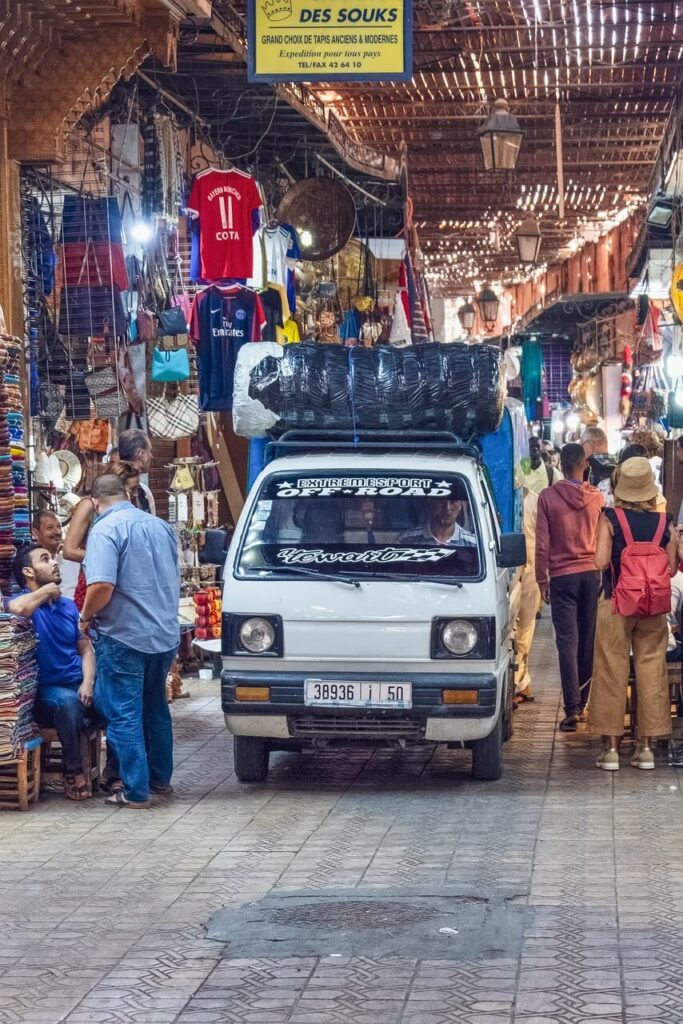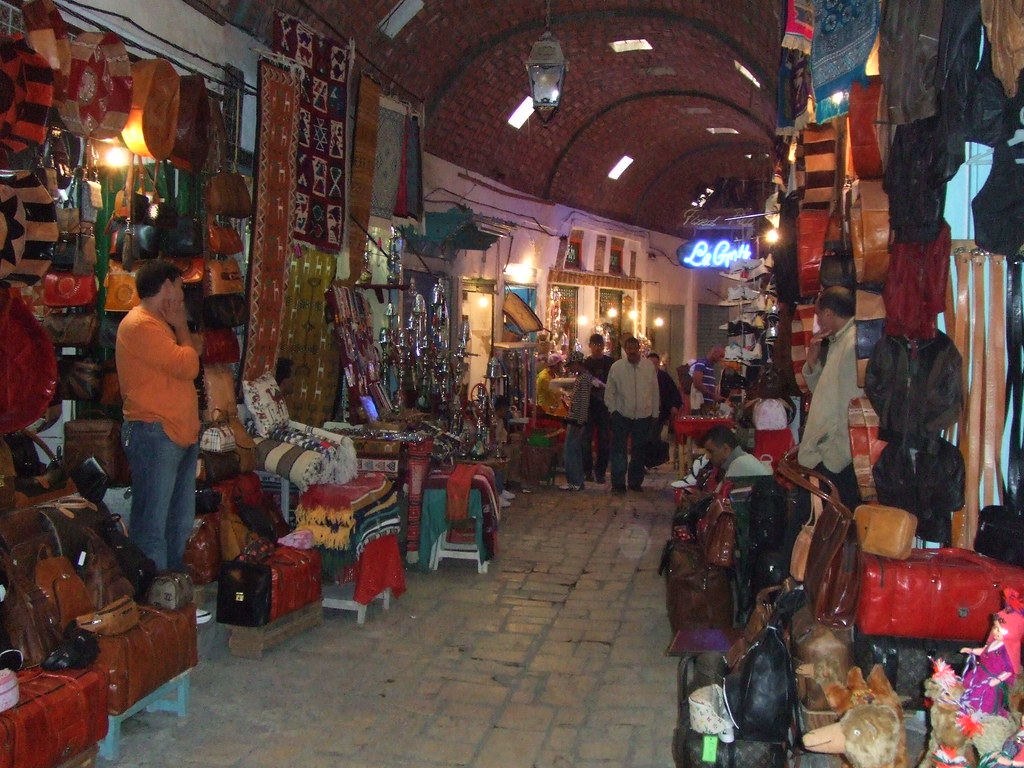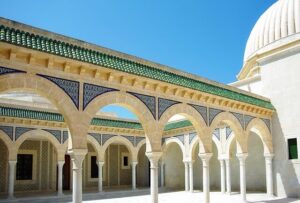Medina of Tunis: A Journey into the Historic Heart of the Capital
The Medina of Tunis, declared a UNESCO World Heritage Site, is a historical and cultural treasure in the heart of the Tunisian capital. Exploring it means immersing yourself in a maze of winding alleys, centuries-old mosques, magnificent palaces, and bustling souks, where local craftsmanship and exotic scents create a unique and unforgettable atmosphere. We will discover the deep meaning of medina, exploring its origins, architecture, and traditions. This guide will provide you with all the necessary information to plan your visit, including opening hours and must-see attractions.
The Medina of Tunis is much more than just a historic district; it is an open-air museum where time seems to stand still. Strolling through its alleys, you can admire masterpieces of Islamic architecture, discover artisan workshops that preserve ancient crafts, and savor the authentic flavors of Tunisian cuisine. Get ready for a unique sensory experience, letting yourself be carried away by the magic of this enchanting place.
Let’s explore what to see in the Medina of Tunis together.
Medina: The Deeper Meaning
The word “medina” derives from the Arabic “madinah,” meaning “city.” In the North African context, it refers to the old town, the historic core of cities, often characterized by traditional architecture and a labyrinthine urban layout. The medina represents the beating heart of the city, preserving local traditions, culture, and identity.
It is a place of gathering and exchange, where commercial, social, and religious activities take place. Its narrow and winding alleys are designed to protect residents from the sun and wind, creating a cool and shaded environment. Traditional houses, with their inner courtyards and decorated windows, reflect Islamic art and architecture. The Medina of Tunis is an emblematic example of this type of city.
Visiting it means immersing yourself in an authentic and fascinating atmosphere, away from the chaos and hustle of modern life. It is an opportunity to discover the history and culture of a people, admire local craftsmanship, and savor traditional flavors. The meaning goes beyond a mere geographical definition; it is a unique cultural and sensory experience.
History of the Medina of Tunis
Its history dates back to the 7th century when the city was founded by the Arabs. Over the centuries, the medina expanded, becoming an important commercial, cultural, and religious center. During the medieval period, Tunis became the capital of the Hafsid Kingdom, marking a time of great prosperity and splendor for the city.
In the 16th century, Tunis was conquered by the Ottomans, who left a significant mark on the medina’s architecture and culture. New mosques, palaces, and fountains were built, enriching the city’s artistic and cultural heritage. The Medina of Tunis became a crossroads of different cultures and influences, a meeting point between East and West.
In the 19th century, Tunisia became a French protectorate, and the medina underwent significant transformations. New roads and infrastructure were built, altering the city’s original appearance. However, the Medina of Tunis preserved its authentic character and cultural identity, becoming a symbol of Tunisian resistance against colonialism.
What to See in the Medina of Tunis
The center offers a wide range of attractions and must-see sites. Among the most important monuments are the Great Mosque (Jamaa ez-Zitouna), Dar Ben Abdallah Palace, the Tourbet el Bey Mausoleum, and the Slimania Madrasa. Every corner of the medina holds a story to discover and an emotion to experience. Let’s explore what to see in this magical place.
Walking through the medina’s alleys, you can admire traditional houses with their inner courtyards, artisan shops producing unique items, and traditional cafés where you can enjoy mint tea and Turkish coffee. Don’t forget to visit the souks, the traditional markets, where you can find a wide range of products, from local crafts to spices, textiles, and jewelry. What to see in the Medina of Tunis is truly an unforgettable experience.
Here are some must-visit places in the Medina of Tunis:
- Great Mosque (Jamaa ez-Zitouna)
- Dar Ben Abdallah Palace
- Tourbet el Bey Mausoleum
- Slimania Madrasa
- Perfumers’ Souk
- Weavers’ Souk
The Souks of the Medina
The souks are the traditional markets of the Medina of Tunis, true labyrinths of alleys and stalls where you can find a wide range of products. Each souk specializes in a particular type of merchandise, such as textiles, perfumes, spices, jewelry, ceramics, and leather goods. Visiting them is a unique sensory experience, an immersion into Tunisian culture and traditions.
The Perfumers’ Souk is famous for its exotic fragrances and essential oils, while the Weavers’ Souk offers a wide range of colorful and fine fabrics. The Jewelers’ Souk is the perfect place to find silver and gold jewelry, crafted using traditional techniques. In the souks, bargaining is common and widely accepted. The Medina of Tunis and its souks are a true paradise for shopping enthusiasts.
Here are some of the most famous souks in the Medina of Tunis:
- Perfumers’ Souk
- Weavers’ Souk
- Jewelers’ Souk
- Leatherworkers’ Souk
- Carpet Souk
Architecture and Monuments
The architecture of the Medina of Tunis is a blend of different styles, reflecting the influences of the various cultures and civilizations that have ruled the city over the centuries. Islamic architecture is predominant, with its mosques, palaces, and decorated fountains. However, elements of Ottoman and European architecture can also be found.
The Great Mosque (Jamaa ez-Zitouna) is the most important monument in the medina, a masterpiece of Islamic architecture. Dar Ben Abdallah Palace is an example of a traditional Tunisian house, featuring an inner courtyard, decorated rooms, and elegant furnishings. The Tourbet el Bey Mausoleum is a funerary complex that houses the tombs of the rulers of the Hussein dynasty. The center is a true open-air museum, where architecture tells the story of the city.
Here are some of the most characteristic architectural elements of the Medina of Tunis:
- Mosques with slender minarets
- Palaces with inner courtyards
- Decorated fountains
- Monumental gates
- Traditional houses with lattice windows
Opening Hours and Useful Information
The Medina of Tunis is open every day, but the opening hours of shops and monuments may vary depending on the season and the day of the week. Generally, shops are open from 9:00 AM to 6:00 PM, while monuments are open from 8:00 AM to 5:00 PM. It is advisable to check the specific opening hours of individual places of interest before visiting.
Entry is free, but a ticket is required to visit some monuments and museums. It is recommended to wear appropriate clothing, covering shoulders and knees, especially when visiting places of worship. It is also advisable to bring a bottle of water and a hat, especially during the summer months.
Here are some useful tips for your visit:
- Check the opening hours of shops and monuments.
- Wear appropriate clothing.
- Bring water and a hat.
- Use a map to find your way around.
- Be aware of pickpockets.
Tips for Visiting
Visiting the Medina of Tunis can be an unforgettable experience, but it is important to follow some tips to avoid unpleasant surprises. It is advisable to use a map to navigate the labyrinthine alleys of the medina and be cautious of pickpockets, who are particularly active in crowded areas. It is also recommended to bargain in the souks, but always with respect and courtesy.
Respect local traditions and culture by dressing appropriately and avoiding behaviors that may offend religious sensitivities. We suggest trying the local specialties offered by street vendors, but always pay attention to hygiene and the freshness of the products. The Medina is a safe and welcoming place, but it is important to be aware of potential risks and take necessary precautions.
Here are some useful tips for visiting:
- Use a map to navigate.
- Be cautious of pickpockets.
- Bargain in the souks.
- Respect local traditions and culture.
- Try local specialties with caution.
Gastronomy in the Medina
The gastronomy of the Medina of Tunis is a true culinary treasure, rich in unique flavors and aromas. In the restaurants and cafés of the medina, you can taste traditional Tunisian cuisine, such as couscous, tajine, brik, and harissa. Don’t forget to try mint tea and Turkish coffee, which are symbols of Tunisian hospitality.
In the souks, you can find a wide variety of fresh food products, such as fruits, vegetables, meat, fish, and spices. Street vendors offer local specialties, including traditional sweets and stuffed sandwiches. Again, it is essential to pay attention to hygiene and the freshness of the products and choose vendors who appear reliable.
Here are some typical dishes to try in the Medina of Tunis:
- Couscous
- Tajine
- Brik
- Harissa
- Mint tea
- Turkish coffee
In conclusion, the medina is a magical and fascinating place, a true cultural and historical treasure. Exploring its labyrinthine alleys, admiring its monuments, visiting its souks, and savoring its flavors is an unforgettable experience. Plan your visit, follow our tips, and get ready to experience a unique adventure in the heart of the Tunisian capital. Always remember the meaning of medina and its historical and cultural importance.
Here is a short video about the Medina of Tunis.
Read our other articles.






